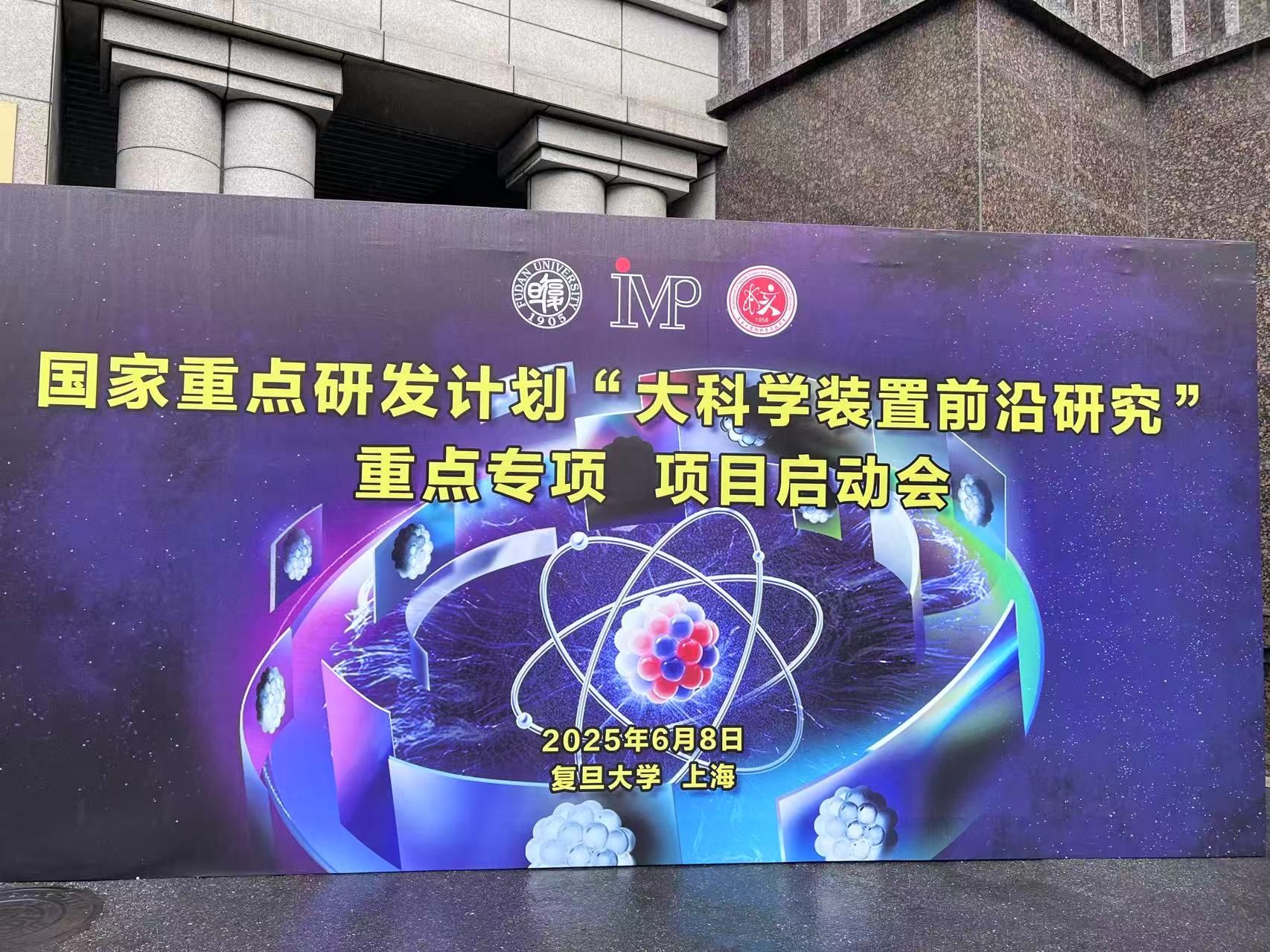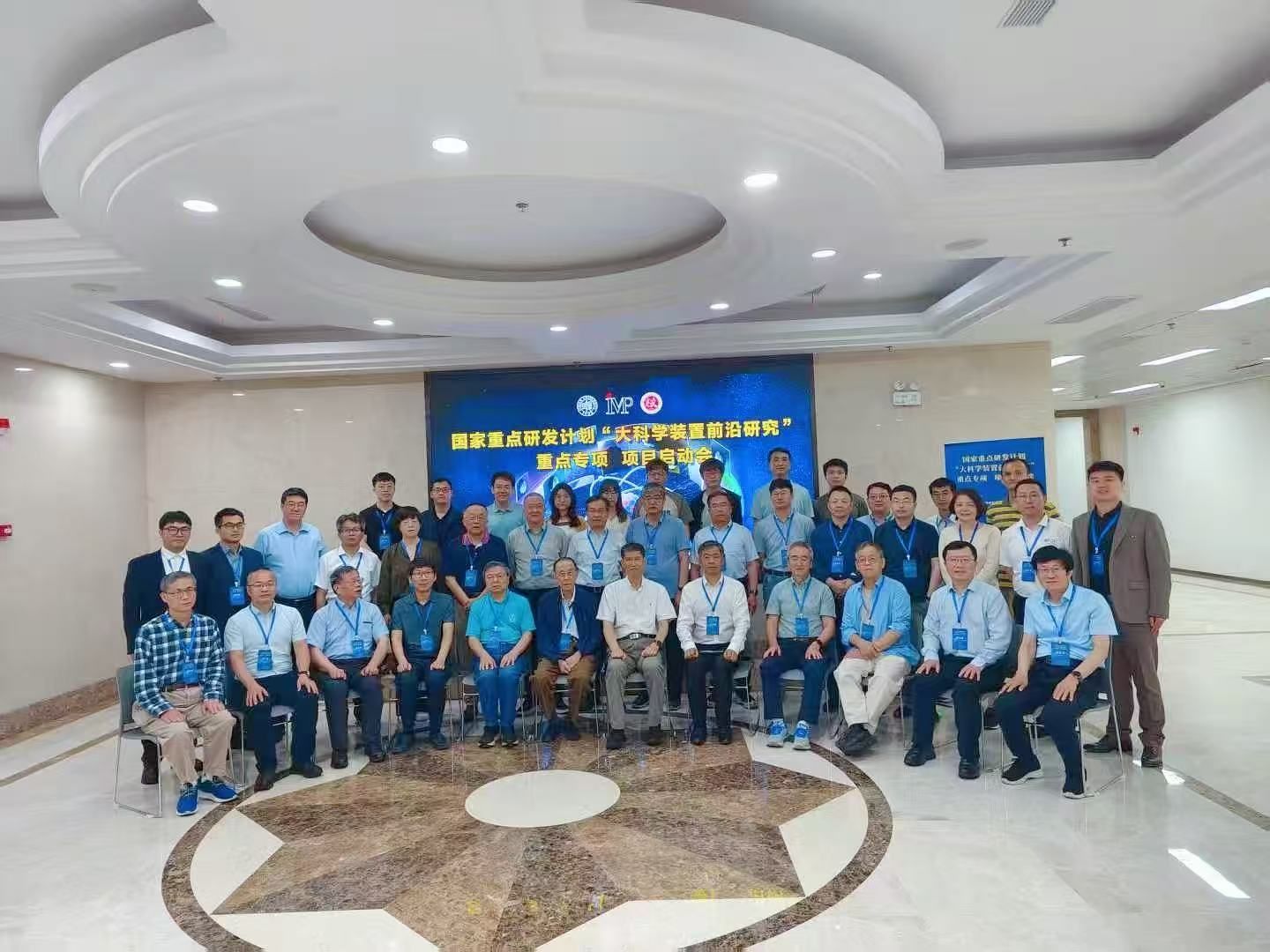On June 8, 2025, the launch meeting for the key project of the National Key R&D Program "Frontier Research of Large Scientific Facilities" was held in Room B5011 of Cross-Building No.1 at the Jiangwan Campus of Fudan University. Leaders and expert guidance team members such as Wang Meng, Deputy Director of the Bureau of Frontier Sciences and Basic Research of the Chinese Academy of Sciences, Academician Ma Yugang, Vice President of Fudan University, and Professor Qin Guangyou, the project responsibility expert, attended the meeting. Focusing on multiple frontier projects, the meeting was led by Fudan University, joining hands with multiple universities and scientific research institutions including Tongji University, the Institute of High Energy Physics of the Chinese Academy of Sciences, and Peking University to form an interdisciplinary and cross-field collaborative innovation system. It carried out in-depth discussions on key scientific issues in the cross-field of quantum information and nuclear physics supported by large scientific facilities, opening a new journey for China's frontier scientific research and technological innovation.

The laboratory where Professor Han Dingding's team is located participated in the project "Quantum Control Research Based on X-ray-Nucleus System", based on the frontier of international scientific and technological competition, and tackled key problems in the core technology of the quantum information field - quantum control. At present, the mature research direction internationally is to use laser in the optical band to control the electrons outside the atomic nucleus. In recent years, new-generation X-ray light sources have developed rapidly. X-ray single photons have high energy, which can resonantly excite the atomic nucleus, not just the extranuclear electrons. The X-ray-nucleus system formed by the combination of the two has unique advantages such as strong anti-interference ability, and is expected to achieve many experiments and applications that are difficult to carry out in the optical and extranuclear electron systems. For example, in the field of quantum precision measurement, the X-ray-nucleus system may give birth to a nuclear clock that is more accurate than the existing atomic clock.
In China, the Shanghai Soft X-ray Free-Electron Laser Facility has been successfully operated, the Hard X-ray Free-Electron Laser Facility is expected to emit light by the end of next year, the Beijing Fourth-Generation High-Energy Synchrotron Radiation Source is expected to be completed and put into use next year, and the Shenzhen Free-Electron Laser Facility is also under construction. Relying on the new-generation hard X-ray light source, the realization of new quantum control technologies based on the X-ray-nucleus system is expected to break through the limitations of the optical band, carry out stable quantum information experiments at room temperature, expand quantum information to the X-ray band, promote the cross-innovative development of quantum information and nuclear physics in China, and lay an important physical foundation for the development of new quantum devices such as nuclear clocks and nuclear batteries.
As the main participants in the project, the laboratory team played an important role in the key R&D project launch meeting, fully participated in the project's plan implementation demonstration meeting, put forward constructive opinions from the aspects of quantum control theoretical model construction and experimental technology path optimization, provided solid academic support for the overall planning and implementation of the project, and strived to contribute to the future new quantum technology based on the platform of this key R&D project.

